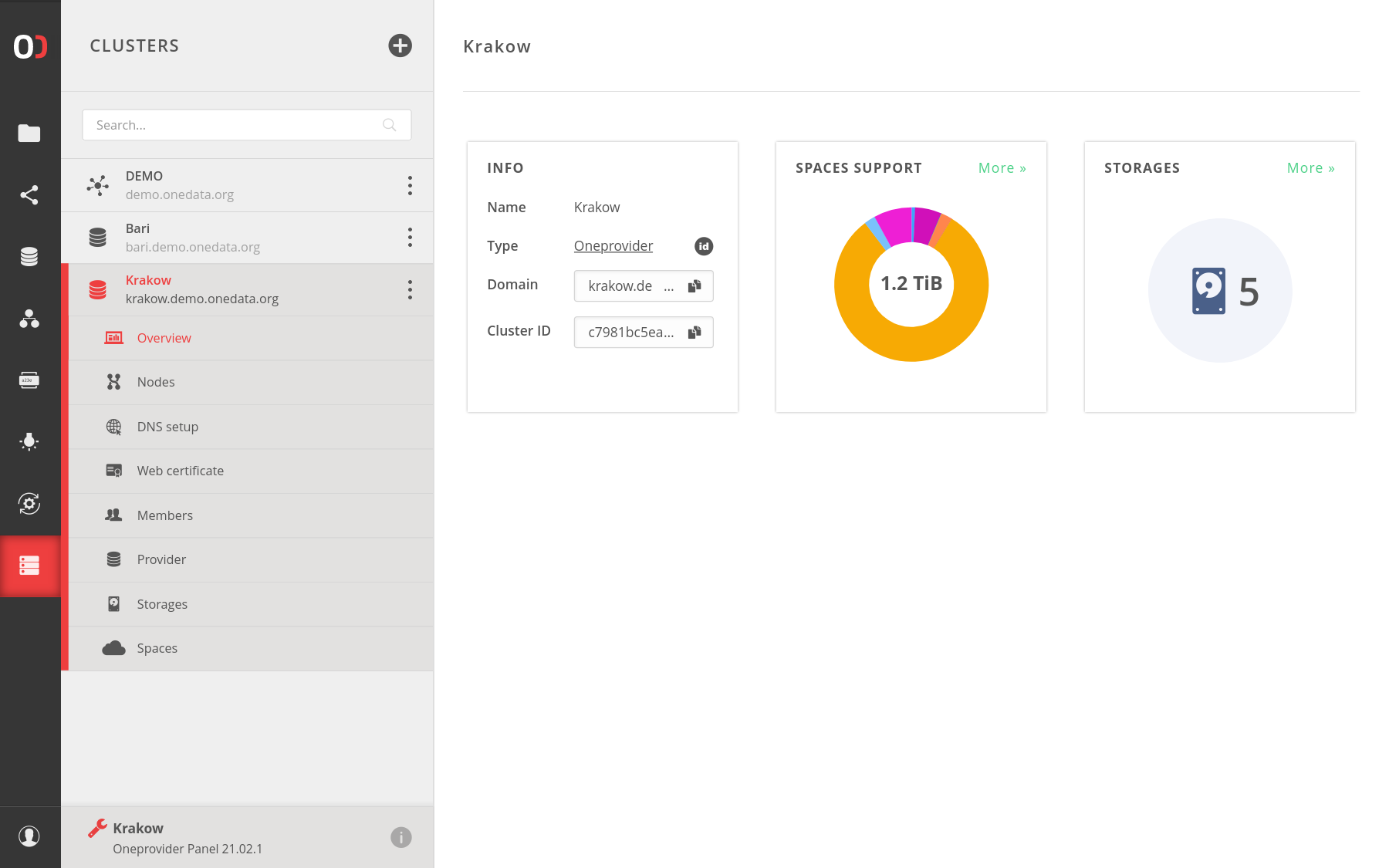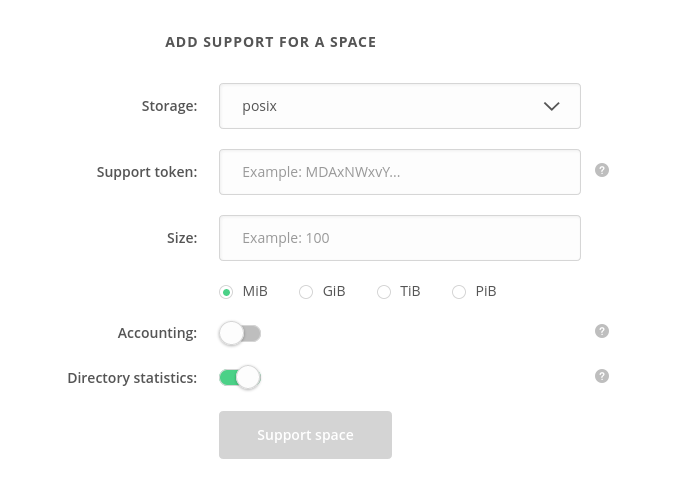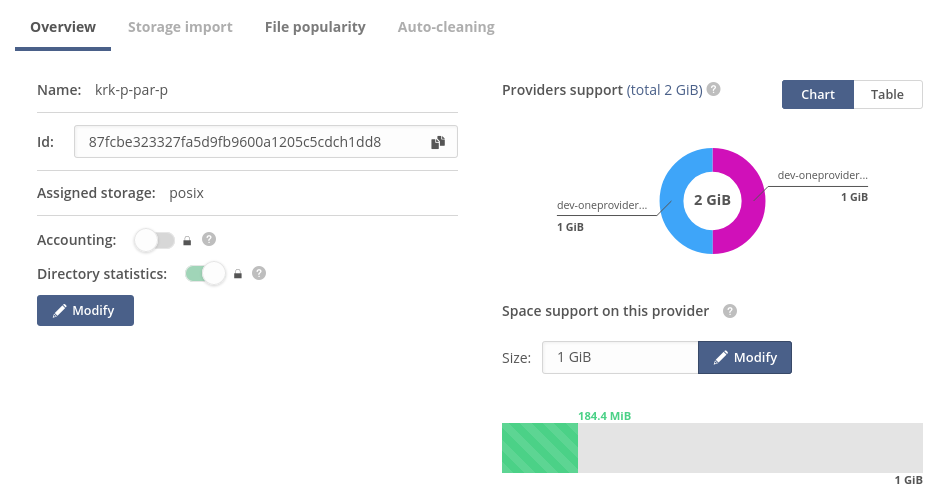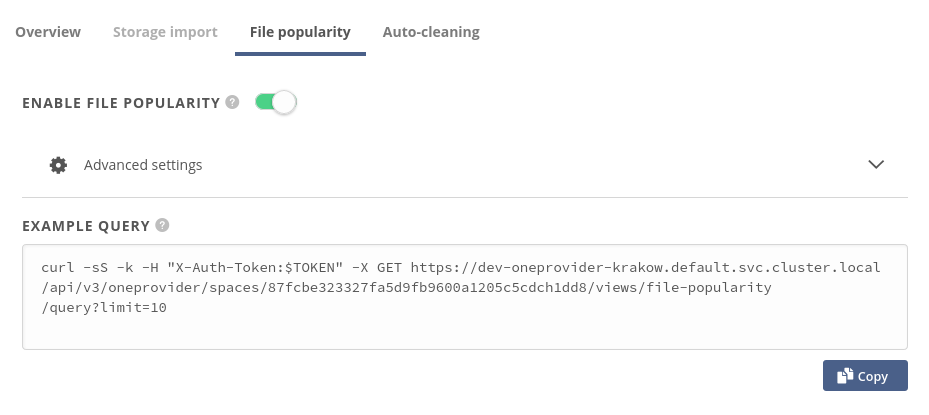# Space support
A space can be perceived as a logical container for data — a layer that hides the complexity of different storage systems and the physical location of files. As such, it requires at least one physical storage attached to be fully functional. That attachment to a storage backend is called supporting the space and is done by a data provider. For more information about the space support concept, refer to this page.
# Granting space support
To request support for a space, its administrator generates a request token similar to the one below:
MDAxZWxvY2F00aW9uIGRlbW8ub25lZGF00YS5vcmcKMDA5NWlkZW500aWZpZXIgMi900bXAtMS91...
It can then be passed to a provider administrator. From this point, the provider administrator can choose whether the support should be granted and how the provider should handle it.
When you — the administrator of the provider — receive a request support token and you want to grant storage to the space behind that token, go to the Onepanel of your Oneprovider cluster (Clusters > Cluster name view).

Navigate to the Spaces submenu of your cluster and click on the Support space button at the top of the page. You will see a form with space support properties.

Now, select a storage backend you would like to use for new support, paste the support token, and choose how much storage capacity should be granted.
TIP
It is possible to support space using a storage backend allowing data import. Read more here.
WARNING
Remember that each provider can grant support for a specific space only once. Hence you should choose the supporting storage carefully as this decision is irreversible.
In addition, you can turn on/off accounting and directory statistics. The latter feature is responsible for collecting information about the logical and physical size of directories as well as files number in the space. The former uses directory statistics to provide quota usage over time.
TIP
The directory statistics feature is enabled by default, but for some scenarios, it might be suitable to turn it off. That may include cases, when information about directory size is not required by any space use-case and, at the same time, very frequent file modifications across many different directories could cause statistics aggregation to consume a meaningful amount of resources.
In the end, click on the Support space button. From now on, the space you have supported has additional storage, so space users can benefit from the additional capacity and data transfer possibilities.
# Space support overview
Each space support handled by a particular provider can be found in the Clusters > Cluster name > Spaces view.

Click on a specific space support to see its details grouped into four tabs.
# "Overview" tab

This tab contains basic information about the selected space support, including the name of the space, assigned storage, state of statistics-related features, and support size. You can also modify some of them up to your preference.
# "Storage import" tab

This tab shows the current state of the storage import mechanism. It allows registering (importing) data located on the supporting storage directly into the supported space. You can read more about storage import here.
It is available only if storage import was enabled during space support creation.
# "File popularity" tab

This tab allows configuring the file popularity mechanism. That functionality enables tracking of usage statistics for files in a space. Read more details here.
# "Auto-cleaning" tab

This tab contains the configuration and execution history of the auto-cleaning mechanism. The purpose of this feature is to automatically maintain storage usage at a certain level and ensure that there is enough space for new replicas when performing continuous computations. See this chapter for more details.
It is available only when file popularity is enabled.
# Revoking space support
Currently, it is not possible to revoke space support once it is granted. The next Onedata release is intended to provide that option. For now, it is possible to either:
- change the size of the granted support,
- remove the space (and all related supports).
# REST API
All operations related to space support management can be performed using the REST API. Refer to the linked API documentation for detailed information and examples.
| Request | Link to API |
|---|---|
| Support space | API (opens new window) |
| List supported spaces | API (opens new window) |
| Get space support details | API (opens new window) |
| Modify space support | API (opens new window) |